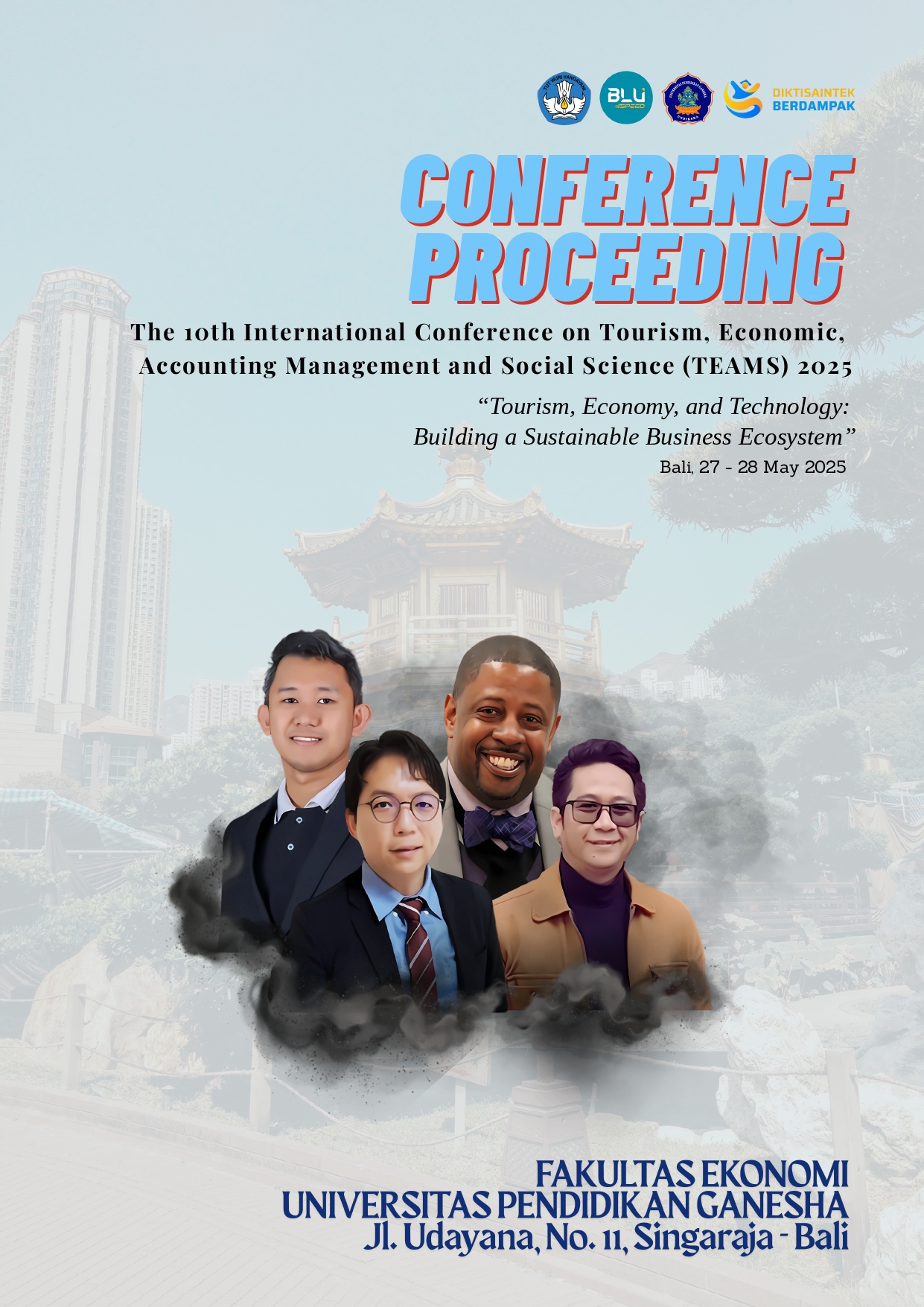ASSESSING FISCAL EFFICIENCY, ECONOMY, AND EFFECTIVENESS: A VALUE FOR MONEY STUDY OF REGIONAL GOVERNMENT FINANCE IN BALI
Keywords:
budget, APBD, value for money, financial performance, regional autonomyAbstract
The Regional Revenue and Expenditure Budget (APBD) plays a crucial role in public financial management at the regional level, influencing development programs and community welfare. However, challenges remain in ensuring budget efficiency and effectiveness. This study analyzes the APBD performance of regencies and cities in Bali Province using the Value for Moneyapproach, focusing on economic, efficiency, and effectiveness aspects. The research employs secondary data from regional financial reports between 2020 and 2023. Findings indicate significant fiscal disparities among regions. Badung Regency demonstrates the highest fiscal independence, with a Local Revenue ratio of 85.73%, while other areas remain highly dependent on central government transfers. Efficiency analysis reveals fluctuating trends, with Gianyar experiencing inefficiency spikes of up to 121% in 2021 before stabilizing in 2023. Badung Regency recorded a high effectiveness ratio of 154% in 2022, reflecting strong fiscal execution but also posing sustainability concerns. Moreover, fiscal balance varies across regions, with some experiencing surpluses while others face deficits, highlighting different budgeting strategies. For instance, Badung reported an expenditure of IDR 7.28 trillion in 2023 against revenues of IDR 7.21 trillion, showing controlled budget management, whereas Bangli faced a deficit with expenditures surpassing revenues. These variations indicate diverse financial strategies and challenges in optimizing budget allocations. This study provides valuable insights for regional governments in enhancing budget efficiency and ensuring fiscal sustainability to support long-term development objectives.References
Bastian, I. (2011). Akuntansi sektor publik: Suatu pengantar. Salemba Empat.
Dunn, W. N. (2018). Public policy analysis: An introduction (6th ed.). Routledge.
Halim, S. (2019). Analisis Kinerja Keuangan Dengan Menggunakan Metode Value for Money Pada Badan Pengelola Keuangan Dan Aset Daerah Kota Bandung. IJPA-The Indonesian Journal, 29-143
Ihalauw, F. Y., Elim, I., & M Kapojos, P. (2023). Analisis Realisasi Anggaran Pendapatan Dan Belanja Daerah Tahun 2019. Jurnal Lppm Bidang Ekososbudkum (Ekonomi, Sosial, Budaya, Dan Hukum), 1272-1280.
Iskandar Tani, S. A. (2023). Analisis APBD dan Kewajiban Untuk Mengukur Kinerja Keuangan Pemerintah Daerah Provinsi Gorontalo Sebelum dan Saat Pandemi Covid 19. SEIKO: Journal of Management & Business, 179-191.
Juwanda. (2021). Analisis Realisasi Anggaran Pendapatan Dan Belanja Untuk Menilai Efektivitan Dan Efesinsi Pemerintahan Kota Mendan. Jurnal Lppm Bidang Ekososbudkum (Ekonomi, Sosial, Budaya, Dan Hukum), 1-11.
Kurnia, S. (2017). Analisis Kinerja Keuangan Dengan Menggunakan Metode Value for Money Pada Badan Pengelola Keuangan Dan Aset Daerah Kota Palembang. IJPA-The Indonesian Journal, 29-45.
Mahmudi. (2016). Manajemen keuangan daerah. UPP STIM YKPN.
Nasution, A. (2018). Desentralisasi fiskal dan efektivitas pengelolaan anggaran daerah. Gramedia Pustaka Utama.
Osborne, D., & Gaebler, T. (1992). Reinventing government: How the entrepreneurial spirit is transforming the public sector. Addison-Wesley.
Schick, A. (1998). Why most developing countries should not try New Zealand reforms. The World Bank Research Observer, 13(1), 123-131.
Tiebout, C. M. (1956). A pure theory of local expenditures. Journal of Political Economy, 64(5), 416-424.
Wessel, D. (2009). In Fed we trust: Ben Bernanke's war on the great panic. Crown Business.
World Bank. (2021). Public sector performance: Efficiency, effectiveness, and fiscal sustainability. World Bank Group.
Wright, J., & Nemec, J. (2012). Public Administration Reform and Financial Management in Developing Countries: International Perspectives. Taylor & Francis.

